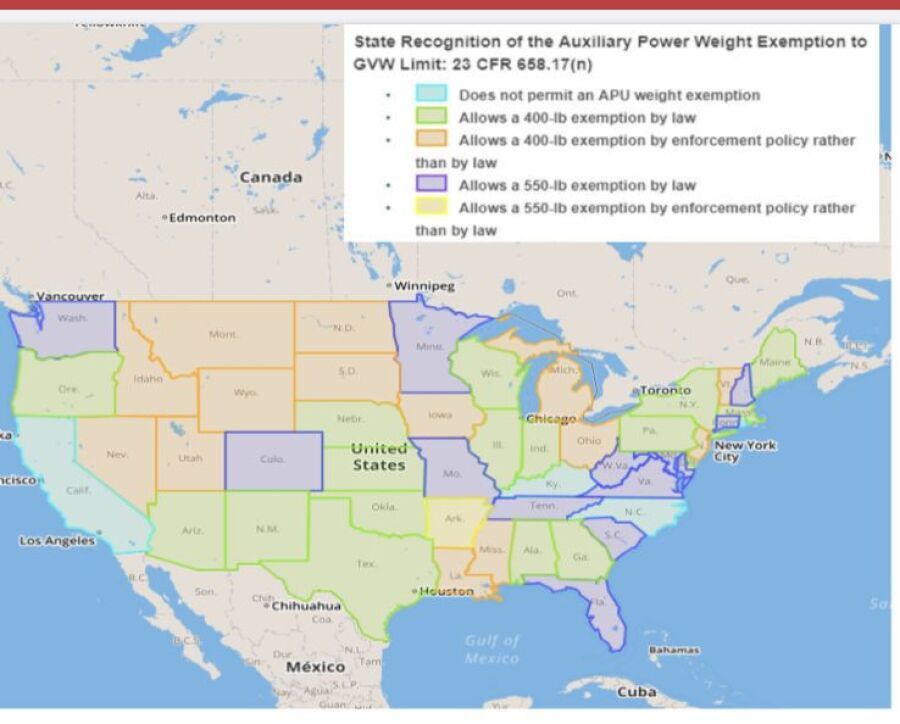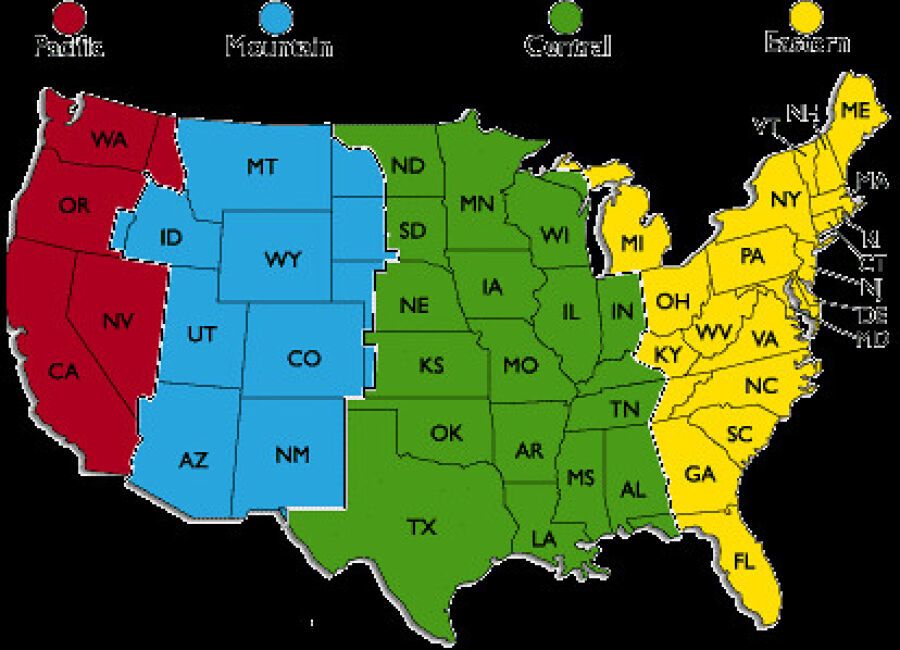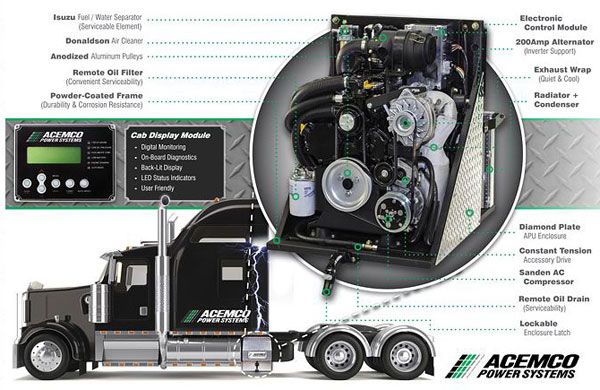Weighing At Scale And Sliding Tandems
Topic 30392 | Page 2

Delco Dave,
I wish I had that chart back when I was driving. It would have been wonderful and easy to aid in proper axle weights. I learned the hard way with sliding either the tandem or 5th wheel or both to be legal sometimes without messing with the bridge laws.
Tandem:
Tandem Axles
A set of axles spaced close together, legally defined as more than 40 and less than 96 inches apart by the USDOT. Drivers tend to refer to the tandem axles on their trailer as just "tandems". You might hear a driver say, "I'm 400 pounds overweight on my tandems", referring to his trailer tandems, not his tractor tandems. Tractor tandems are generally just referred to as "drives" which is short for "drive axles".
I have compiled a handful of useful screenshots of reference material from right here on TT like the 5th wheel/Tandem slide chart. Below are wind shutdown chart, APU weight exemption and a time zone map for trip planning



Tandem:
Tandem Axles
A set of axles spaced close together, legally defined as more than 40 and less than 96 inches apart by the USDOT. Drivers tend to refer to the tandem axles on their trailer as just "tandems". You might hear a driver say, "I'm 400 pounds overweight on my tandems", referring to his trailer tandems, not his tractor tandems. Tractor tandems are generally just referred to as "drives" which is short for "drive axles".
APU:
Auxiliary Power Unit
On tractor trailers, and APU is a small diesel engine that powers a heat and air conditioning unit while charging the truck's main batteries at the same time. This allows the driver to remain comfortable in the cab and have access to electric power without running the main truck engine.
Having an APU helps save money in fuel costs and saves wear and tear on the main engine, though they tend to be expensive to install and maintain. Therefore only a very small percentage of the trucks on the road today come equipped with an APU.


I want to thank you all for your help and knowledge, especially the diagrams. I will put all the information you have given me to use here in GA. Hopefully I will get the hang of it and it will come naturally as it does for you guys. Again, thank you and be safe out there. May God bless and ride with you all. If you have any other helpful hints please let me know. God Bless.... Dtrain from Dalton,GA
So I'll ask the obvious question! Have u been asking the same question on here for 5 years?
So I'll ask the obvious question! Have u been asking the same question on here for 5 years?
Great catch Donna.
Does make me wonder, too.
So I'll ask the obvious question! Have u been asking the same question on here for 5 years?
Great catch Donna.
Does make me wonder, too.
Todd rearing his head??!!
Laura

So I'll ask the obvious question! Have u been asking the same question on here for 5 years?
At least twice before this time...
So “Duane”... what’s the deal ? You are either a very slow learner or a very boring Troll.
TWIC:
Transportation Worker Identification Credential
Truck drivers who regularly pick up from or deliver to the shipping ports will often be required to carry a TWIC card.
Your TWIC is a tamper-resistant biometric card which acts as both your identification in secure areas, as well as an indicator of you having passed the necessary security clearance. TWIC cards are valid for five years. The issuance of TWIC cards is overseen by the Transportation Security Administration and the Department of Homeland Security.
So I'll ask the obvious question! Have u been asking the same question on here for 5 years?
At least twice before this time...
So “Duane”... what’s the deal ? You are either a very slow learner or a very boring Troll.
Hiya, D'train.
Finally put a house of 'boyz' to bed here.. just been over this thread a few times, and not seeing your confusion. AT all.
(ps: Nah, not Todd.) Imho, anyway!
Seriously ... no disrespect D'train ... but for 5 YEARS asking about the tandem rules/laws/weights... Heck, I've only been a trucker's 'wife' for 20 plus, and MY few months/year on the road, were fixed, pulling a tank like PJ and a notable few others, yet .. somehow, I just 'remember' these things. ie: the spacing (in inches, re: holes) 250# or 4 to 500# ... Errol's example was AWESOME, and I'm plagiarizing that...! Big Scott gave you #'s as well. Mikey B. ~~~ spot on.
Somehow, even 'I' know this stuff. A 'non' driver (yet!)
So, are you 'finally' getting into a combination vehicle??? Seems like much of your past posts were about straights/box vans.
Can you share who you drive for now?? If you did, I missed it.
My husband drives with Don's company (he has more pix & posts lol) for FAB. Daycabs are a bit different, and some of the trucks are single axle, yet many (like my Tom's) are double axle. Factors. Fixed 5th wheel (most often) as well. Not carved in stone, however. As Laura mentioned.. not worth messing with... unless you are into HH.. imho, too.
The more YOU SHARE, along with ASK, helps us (THEM!!!) help you!!!!!
I wish you well, man. Our mantra here at TT is .. well, at the top of the page. We all try. The mods here are fantabulous, and .. this lil' cheerleader kicks in what ever tidbits (and/or encouragement!) I can!
I want to thank you all for your help and knowledge, especially the diagrams. I will put all the information you have given me to use here in GA. Hopefully I will get the hang of it and it will come naturally as it does for you guys. Again, thank you and be safe out there. May God bless and ride with you all. If you have any other helpful hints please let me know. God Bless.... Dtrain from Dalton,GA
God bless you & ride beside you as well, good sir. Another secret (tidbit) for some folks that works rather well, is to take a dry erase marker, and write on your actual window. (Preferably not the front one, lol.. ) In a daycab, use the rear, passenger, or your side ... notate this stuff. Copy the diagrams shared above.. snap pix on your phone straight away, if it helps.
If you'd share more about what 'exactly' you're trying to 'learn' here, THESE VETS could be of WAY more help; even lil'ole' myself included.
Be safe; stop back. Heed the replies, as you can!
~ Anne ~
Combination Vehicle:
A vehicle with two separate parts - the power unit (tractor) and the trailer. Tractor-trailers are considered combination vehicles.
Tandem:
Tandem Axles
A set of axles spaced close together, legally defined as more than 40 and less than 96 inches apart by the USDOT. Drivers tend to refer to the tandem axles on their trailer as just "tandems". You might hear a driver say, "I'm 400 pounds overweight on my tandems", referring to his trailer tandems, not his tractor tandems. Tractor tandems are generally just referred to as "drives" which is short for "drive axles".
TWIC:
Transportation Worker Identification Credential
Truck drivers who regularly pick up from or deliver to the shipping ports will often be required to carry a TWIC card.
Your TWIC is a tamper-resistant biometric card which acts as both your identification in secure areas, as well as an indicator of you having passed the necessary security clearance. TWIC cards are valid for five years. The issuance of TWIC cards is overseen by the Transportation Security Administration and the Department of Homeland Security.

Well, Ms. Donna M and everyone else that may be wondering if or why I have been asking this question for 5 yrs or what's going on well here is my positon. I do drive a tractor-trailer. I drive locally. The company I drive for we hardly ever cross scales therefore, we rarely if ever have to slide tandems or worry about weight. When I asked the question before we had started going out of state pretty regular and you would have to cross a scale at one point and there was a possibility that you may run into portable scales at the destination. I did not make this trip all the time because different drivers went so since I did not go all the time and it has been 5yrs or so I had forgotten or it just didn't stick with me since I wasn't having to do it everyday or very often. Yes I could have asked my co-workers or referred back to the dialogue of 5yrs ago, but I didn't, therefore I asked again. Now I have never ran the road (OTR driver) so I will admit there are probably a lot of things I don't know or have not experienced since I have been a local driver all of my time in driving. We brakedown we have a shop that comes out to fix it. So you don't have to or try to fix/repair it yourself on the road. There are a lot of things that are different from local to OTR driving. The concept, rules, equipment inspections and etc are the same but like I mentioned earlier locally you don't really have to worry about weight, tandem sliding, bridge laws, etc. At least not where I am from in GA and if you do, I have not heard of it or experienced it. So, I hope this gives you a little insight into why I asked the weight question again and I may have some other questions later. I thought this was a good site to ask and get information from different and experienced drivers. Thanks again to the drivers out there that offered help and information. There is one thing that I caught that may always help me from now on the advice to slide towards the problem. I don't think I got that information 5yrs ago. Again thanks to all for the open forum and dialogue. It is really helpful and informative.
OTR:
Over The Road
OTR driving normally means you'll be hauling freight to various customers throughout your company's hauling region. It often entails being gone from home for two to three weeks at a time.
Tandems:
Tandem Axles
A set of axles spaced close together, legally defined as more than 40 and less than 96 inches apart by the USDOT. Drivers tend to refer to the tandem axles on their trailer as just "tandems". You might hear a driver say, "I'm 400 pounds overweight on my tandems", referring to his trailer tandems, not his tractor tandems. Tractor tandems are generally just referred to as "drives" which is short for "drive axles".
Tandem:
Tandem Axles
A set of axles spaced close together, legally defined as more than 40 and less than 96 inches apart by the USDOT. Drivers tend to refer to the tandem axles on their trailer as just "tandems". You might hear a driver say, "I'm 400 pounds overweight on my tandems", referring to his trailer tandems, not his tractor tandems. Tractor tandems are generally just referred to as "drives" which is short for "drive axles".
Dm:
Dispatcher, Fleet Manager, Driver Manager
The primary person a driver communicates with at his/her company. A dispatcher can play many roles, depending on the company's structure. Dispatchers may assign freight, file requests for home time, relay messages between the driver and management, inform customer service of any delays, change appointment times, and report information to the load planners.New Reply:
New! Check out our help videos for a better understanding of our forum features

















Preview:
This topic has the following tags:
Advice For New Truck Drivers Becoming A Truck Driver Cameras Photos Truck Driver Safety







 TT On Facebook
TT On Facebook
Hey Duane, I don't see where you have ever taken advantage of our free training materials on this very subject. This is everyday trucker wisdom that you need to know out here. Our High Road Training program has a great section devoted to weight distribution. You should spend some time there and put yourself at the head of the class! It's not that hard to understand, and it will make you into a teacher or master instead of just wondering how to do this stuff. Here's a link to the section on Truck Weight Distribution and Balance.
CDL:
Commercial Driver's License (CDL)
A CDL is required to drive any of the following vehicles: